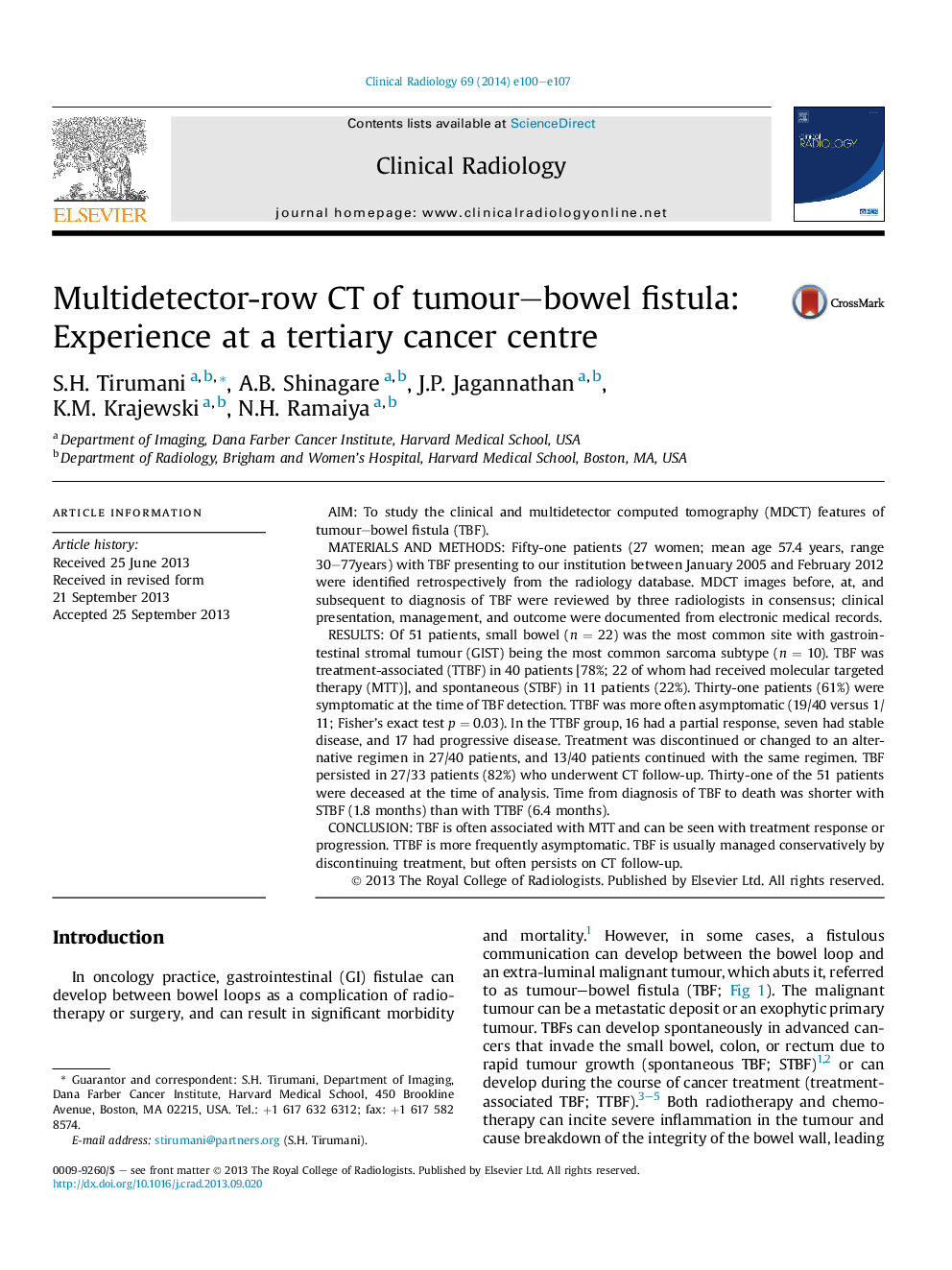| Article ID | Journal | Published Year | Pages | File Type |
|---|---|---|---|---|
| 3981488 | Clinical Radiology | 2014 | 8 Pages |
AimTo study the clinical and multidetector computed tomography (MDCT) features of tumour–bowel fistula (TBF).Materials and methodsFifty-one patients (27 women; mean age 57.4 years, range 30–77years) with TBF presenting to our institution between January 2005 and February 2012 were identified retrospectively from the radiology database. MDCT images before, at, and subsequent to diagnosis of TBF were reviewed by three radiologists in consensus; clinical presentation, management, and outcome were documented from electronic medical records.ResultsOf 51 patients, small bowel (n = 22) was the most common site with gastrointestinal stromal tumour (GIST) being the most common sarcoma subtype (n = 10). TBF was treatment-associated (TTBF) in 40 patients [78%; 22 of whom had received molecular targeted therapy (MTT)], and spontaneous (STBF) in 11 patients (22%). Thirty-one patients (61%) were symptomatic at the time of TBF detection. TTBF was more often asymptomatic (19/40 versus 1/11; Fisher's exact test p = 0.03). In the TTBF group, 16 had a partial response, seven had stable disease, and 17 had progressive disease. Treatment was discontinued or changed to an alternative regimen in 27/40 patients, and 13/40 patients continued with the same regimen. TBF persisted in 27/33 patients (82%) who underwent CT follow-up. Thirty-one of the 51 patients were deceased at the time of analysis. Time from diagnosis of TBF to death was shorter with STBF (1.8 months) than with TTBF (6.4 months).ConclusionTBF is often associated with MTT and can be seen with treatment response or progression. TTBF is more frequently asymptomatic. TBF is usually managed conservatively by discontinuing treatment, but often persists on CT follow-up.
